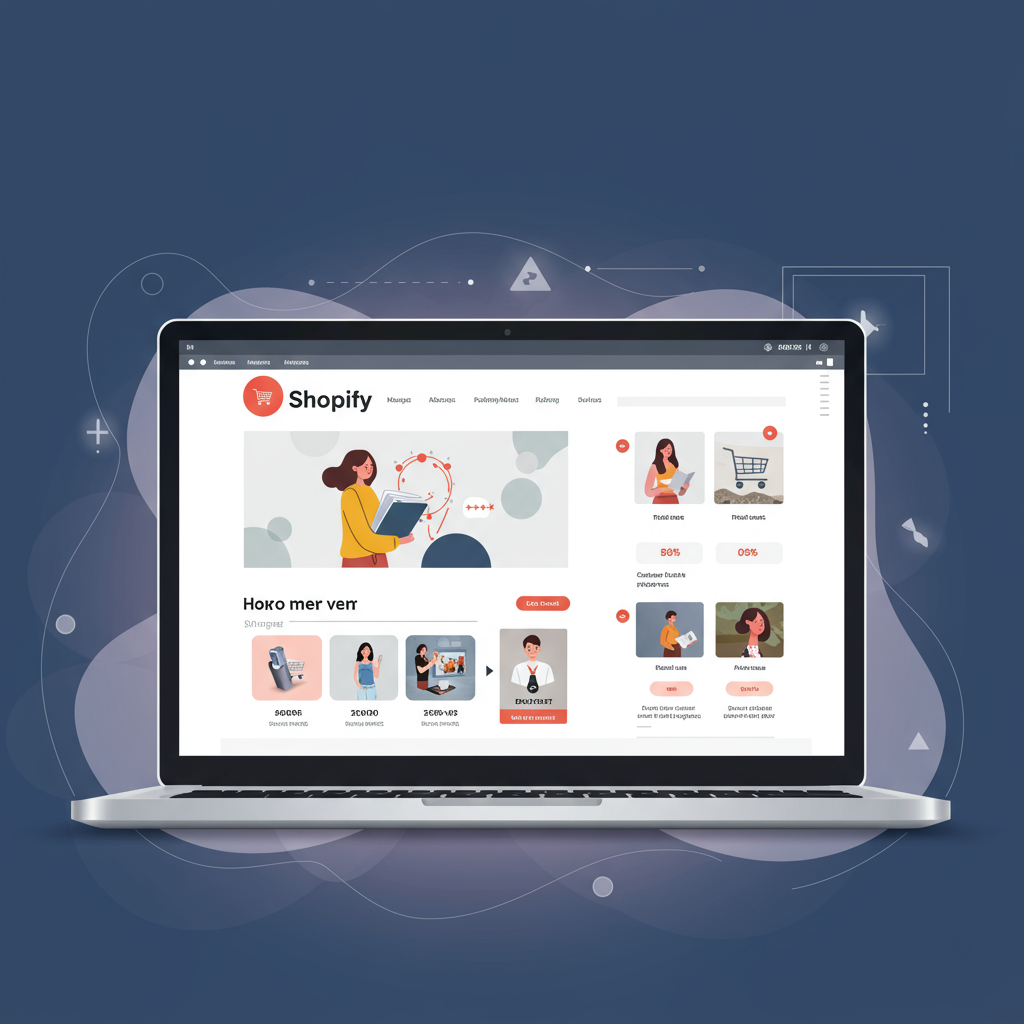Unlock higher conversions and deeper customer engagement with these forward-thinking strategies for your online store’s most crucial page.
As a Shopify merchant, you know your online store’s homepage is more than just a digital storefront; it’s your brand’s first impression, your virtual handshake with potential customers.
In the rapidly evolving e-commerce landscape, staying ahead means constantly refining your approach, especially as we look towards 2025.
The design choices you make today for your Shopify homepage will significantly impact your conversion rates, customer engagement, and ultimately, your bottom line tomorrow.
I’ve spent countless hours analyzing trends and best practices, and I’m excited to share my insights on how to craft a compelling, high-converting homepage for the year 2025.
My goal is to equip you with actionable strategies that will not only make your store look fantastic but also perform exceptionally well.
One of the biggest shifts we’re seeing is the move towards hyper-personalization, driven by artificial intelligence. AI-driven recommendations and dynamic content are no longer just for the big players.
Your homepage in 2025 should intelligently adapt to individual visitor behavior, showcasing products they’re most likely to be interested in, even on their very first visit.
Immersive experiences are also becoming paramount. Static images are becoming less impactful; consider integrating 3D models, augmented reality (AR) previews, or high-quality product videos directly on your homepage.
These elements provide a richer, more engaging experience, helping customers visualize products in their own space or from every angle, reducing purchase hesitation.
Consumers are increasingly conscious of where and how products are made. Your homepage should subtly, yet clearly, communicate your brand’s commitment to sustainability, ethical practices, or social responsibility if applicable.
This builds trust and resonates deeply with a growing segment of the market, aligning your brand with their values.
While this isn’t new, its importance continues to grow: mobile-first design. A significant portion of your traffic will come from mobile devices.
Your homepage *must* be flawlessly responsive, fast-loading, and easy to navigate on any screen size. Test it rigorously on various devices and browsers.
Blazing fast load times are paramount. Google prioritizes fast sites, and impatient customers will abandon slow-loading pages within seconds.
Optimize images, leverage lazy loading for content below the fold, and choose a lightweight, performance-optimized Shopify theme.
Let’s talk about essential homepage elements, starting with the Hero Section. This is the first thing visitors see, and it needs a compelling, high-resolution image or video, a clear value proposition, and a prominent call-to-action (CTA).
Make your unique selling proposition (USP) immediately obvious here. What problem do you solve? What makes you different from your competitors?
Intuitive Navigation is non-negotiable. Your main menu should be clear, concise, and easy to find, ideally with a sticky header for effortless browsing.
A well-organized menu guides visitors effortlessly to what they’re looking for, reducing frustration and significantly lowering bounce rates.
Showcase your best-sellers, new arrivals, or seasonal collections directly on the homepage using high-quality product photography.
Curate these product highlights thoughtfully to entice exploration and encourage clicks deeper into your catalog, leading to more sales.
Integrate social proof. Display customer reviews, testimonials, or user-generated content prominently. People trust what other people say more than what a brand says about itself.
Displaying star ratings or snippets of positive feedback can significantly boost confidence and conversions, acting as powerful endorsements.
Every section of your homepage should have a purpose, and often that purpose is to drive a specific action. Use strong, action-oriented language for your buttons and clear Calls-to-Action (CTAs).
Whether it’s ‘Shop Now,’ ‘Learn More,’ or ‘Discover Our Collection,’ make it obvious what you want the visitor to do next.
If you have a blog, feature recent articles on your homepage. This positions you as an authority, provides valuable content, and improves your site’s SEO.
It also encourages longer visits and can nurture leads by offering solutions and information beyond just product listings.
Make it easy for customers to find your contact information, FAQ, shipping policies, and return policies. Display trust badges if you use secure payment gateways.
Transparency builds trust, and trust is the absolute foundation of any successful online business, especially in e-commerce.
Regarding technical considerations, while homepage content might be limited, ensure your title tags, meta descriptions, and image alt texts are optimized with relevant keywords for SEO.
Google still needs to understand what your page is about to rank it effectively in search results.
Design for everyone by prioritizing accessibility. Ensure your site is navigable by keyboard, has sufficient color contrast, and provides descriptive alt text for all images.
An accessible website not only broadens your potential audience but also reflects positively on your brand’s values and commitment to inclusivity.
Don’t just set it and forget it. Continuously A/B test different headlines, images, CTAs, and layouts to see what resonates best with your audience.
Data-driven decisions are always the most effective way to optimize your homepage’s performance and ensure it’s working as hard as possible for you.
The e-commerce landscape will continue to evolve. Design your homepage with flexibility in mind, allowing for easy updates and adaptations to new technologies or trends.
Stay informed about Shopify’s new features and app integrations that can enhance your homepage’s functionality and keep you ahead of the curve.
Remember, your homepage is a living, breathing entity that should evolve with your brand and your customers’ changing expectations.
By focusing on user experience, embracing emerging technologies, and continuously optimizing, you’ll ensure your Shopify homepage remains a powerful conversion engine for 2025 and beyond. I truly believe that by implementing these strategies, you’ll see a significant positive impact on your store’s performance.
Now that I’ve shared my thoughts, I’m curious: What do you think about this article? Are there any specific homepage design challenges you’re facing, or tips you’ve found particularly effective? I’d love to hear your perspective!






